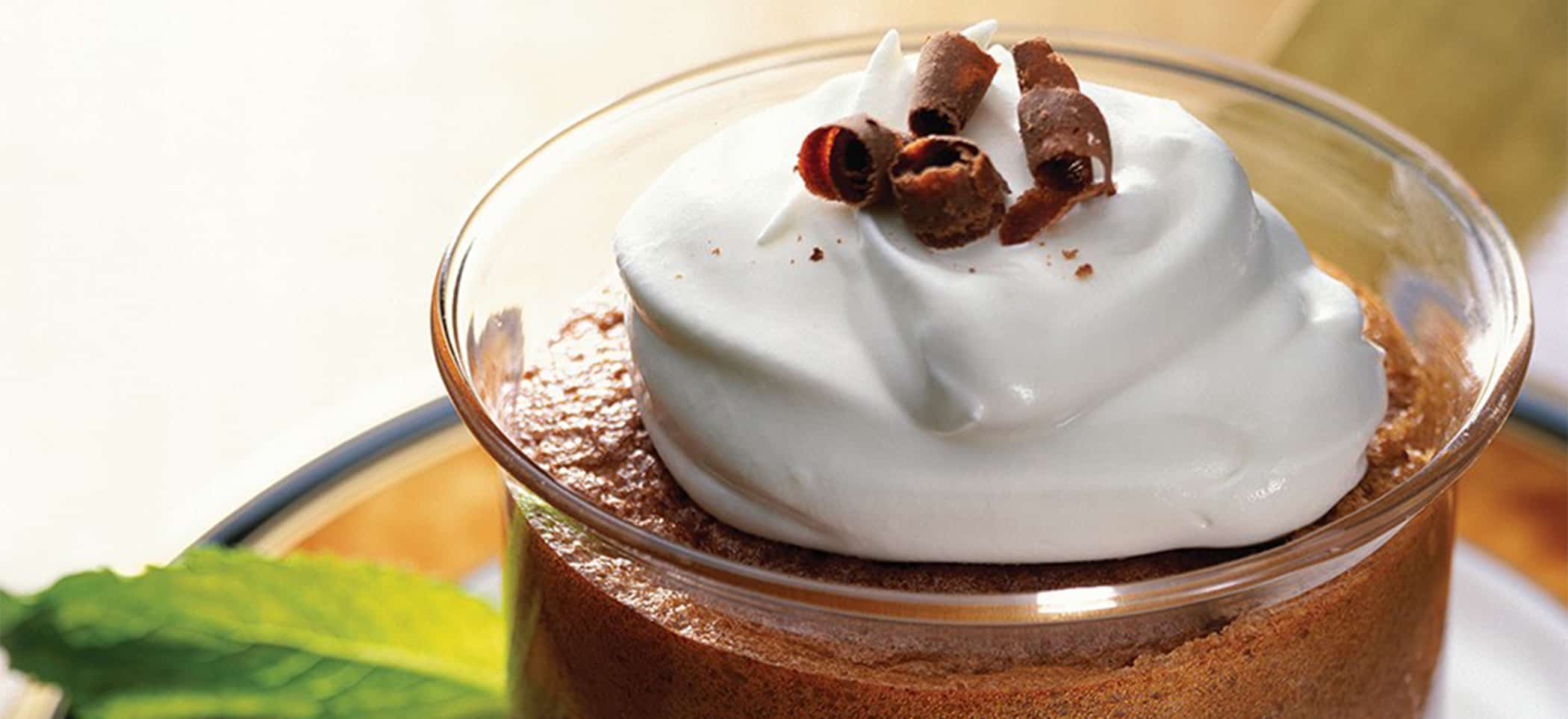

Directions
HEAT oven to 350°F. PLACE six 6-oz. greased custard cups in 13 x 9 x 2-inch baking pan.
BEAT egg whites with cream of tartar in mixer bowl with whisk attachment on high speed just until whites are stiff but not dry and no longer slip when bowl is tilted; transfer to large bowl.
BEAT egg yolks, milk, syrup, flour and vanilla in clean mixer bowl on high speed until smooth. Gently but thoroughly FOLD into beaten whites until color is uniform. POUR into custard cups, dividing evenly.
PLACE pan on a rack in the center of a 350°F oven; pour very hot water into pan (hot-water bath) to within 1/2 inch of top of cups. BAKE until wooden pick inserted near center comes out clean, 30 to 35 minutes. REMOVE cups from water bath at once; COOL on wire rack at least 10 minutes.
Ingredients
- 3 large EGG whites, room temperature
- 1/4 tsp. cream of tartar
- 1 1/4 cups milk
- 1/3 cup chocolate-flavored syrup
- 1/4 cup all-purpose flour
- 3/4 tsp. vanilla
Tips
This rich chocolate sponge custard can be served warm or cold. Garnish with berries or top with marshmallow fluff or whipped cream.
Sponge custard: unlike basic baked custard, for sponge custard, egg whites are beaten separately and folded into the batter. During baking the batter separates, to form a creamy custard on the bottom with a sponge-cake-like top.
Don’t skip the hot-water bath. A hot-water bath, or bain-marie, insulates the custard from the direct heat of the oven and promotes even cooking so the edges don’t overcook before the center is done. Very hot tap water will do.
Keep the yolks separate from the whites. Fat from egg yolk will prevent egg whites from beating up properly. When separating eggs, take care that no yolk gets in the whites. To avoid an accident, separate each egg white into a cup or small bowl before transferring it to the mixer bowl. Discard any white that has even a speck of yolk in it.
Egg temperature: It’s easiest to separate eggs cleanly when they are refrigerator cold. However egg whites whip up to greater volume when they’ve had a chance to warm up a bit, 20 to 30 minutes. Always begin by separating the eggs. Let the whites stand at room temperature while you prepare the other ingredients.
Beat egg whites just until they are stiff but not dry and no longer slip when the bowl is tilted. When under beaten, whites will not achieve full volume. Over beaten whites form clumps of dry puffs which don’t hold air well, are difficult to incorporate when folding and do not expand properly when baked.
This recipe is a good source of protein and choline.
Per serving: 1/6th of Recipe
- Calories 135
- Total fat 4 g
- Saturated fat 2 g
- Polyunsaturated fat 0 g
- Monounsaturated fat 1 g
- Cholesterol 97 mg
- Sodium 76 mg
- Carbohydrates 19 g
- Fiber 1 g
- Sugar 12 g
- Protein 6 g
- Vitamin A 32 mcg
- Vitamin D 0 mcg
- Folate 23 mcg
- Choline 71 mg
- Calcium 90 mg
- Iron 1 mg
- Potassium 102 mg
To ensure food safety, eggs should be cooked until both the yolk and the white are firm. Consuming raw or undercooked eggs may increase your risk of foodborne illness, especially for those with certain medical conditions. For recipes that call for eggs that are raw or undercooked when the dish is served, use either pasteurized shell eggs that have been treated to destroy Salmonella, or use pasteurized egg products.
